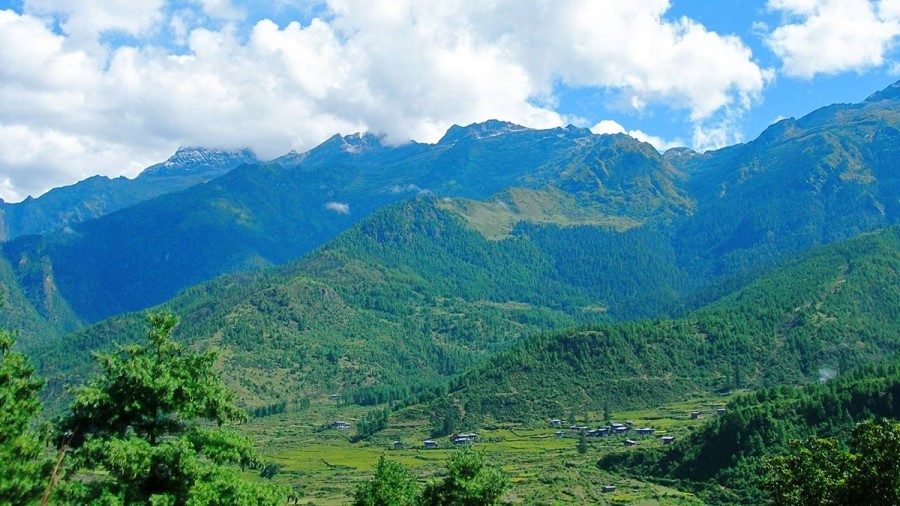Bhutan environment is mostly in undisturbed and pristine form. The ecosystem in Bhutan is diverse, because of its location, great geographical and climatic variations. Due to Bhutan’s location and unique geographical and climatic variations, it is one of the world’s last remaining biodiversity hotspots.
Bhutan’s high, rugged mountains and deep valleys are rich with spectacular biodiversity, making one of the world’s ten most important biodiversity ‘hotspots’.
Knowing the importance of the natural environment, Royal Government of Bhutan takes its conservations at the heart of its development strategy. Royal Government of Bhutan has also committed in maintaining 60 percent forest cover for all time to come. Currently the total land under forest cover is 72 percent and more than 26 percent of the land is under the protected areas, comprising of four national parks and about 9 percent of the land fall under biological corridors so that the wild life sanctuaries and nature reserves connect protected areas.
The names of National Parks are:
- Jigme Singye Wangchuck National Park: Located in the central part of the country, Jigme Singye Wangchuck National Park covers 1,300 sq.km and is the second largest protected area of Bhutan.
- Thrumshingla National Park: Situated at the very heart of the country and covering 768 sq. km, Thrumshingla National was officially opened in July 1998.
- Royal Manas National Park: Bhutan’s Crown Jewel, the Manas National Park represents the largest example of tropical and sub-tropical ecosystems in Bhutan
- Jigme Dorji National Park: With an area of 4,349 sq. km, the Jigme Dorji National Park is the largest protected area in Bhutan. It is one of the most biologically rich areas in the Eastern Himalayan region, and stretches from warm broad-leaved forests to permanent ice fields and glaciers on Bhutan’s north-western border.
The Names of Wildlife Sanctuaries are:
- Bumdeling Wildlife Sanctuary: Bumdeling Wildlife Sanctuary is located in north-western part of Bhutan covering an area of 1,545 sq. km with 420 sq. km of buffer zone encompassing parts of Trashiyangtse, Lhuntshe, and Mongar district. It shares international borders with the Tibetan region of China in the north and India in the north east. The sanctuary is home to around 100 species of mammals, including globally endangered species such as snow leopard, Royal Bengal tiger and red panda.
- Sakteng Wildlife Sanctuary: Located in the easternmost part of the Kingdom, Sakteng Wildlife Sanctuary spans an area of 650 sq. km and is Bhutan’s newest protected area (launched in 2003). The sanctuary is a lost world of biodiversity waiting to be discovered. It presents a wide diversity of Himalayan terrestrial ecosystems, namely alpine meadow, temperate forest, and warm broadleaf forest.
- Khaling Wildlife Sanctuary: With an area of 273 sq km, this is the smallest protected area in the kingdom.
- Philsoo Wildlife Sanctuary: This relatively small protected-area is located near the Southern border to India, approximately 50 km from Phuntsholing.
- Wangchuck Wildlife Sanctuary: The Wangchuck Centennial Park was formally inaugurated as a National Park in June 2008. With an area of 4149 sq km it is the largest National Park in the kingdom. Several high mountains such as Mt. Gangkar Puensum are found within the park’s boundaries.
- Toorsa Strict Nature Reserve: Located in Western Haa, the Torsa Strict Nature Reserve covers an area of 644 sq km


